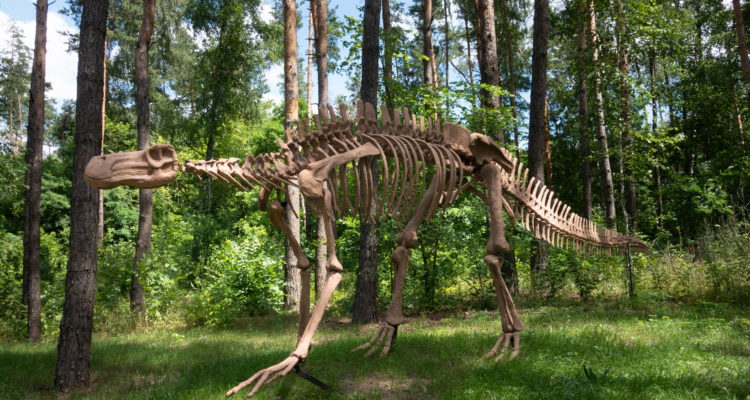The specific shape of the cavities caught the researchers’ attention: They were very similar to cavities created by a rare tumor.
By World Israel News Staff
Israeli researchers identified a benign tumor in two fossilized tail vertebrae of a young dinosaur that lived in southern Alberta over 60 million years ago.
The tumor was discovered by researchers at Tel Aviv University, led by Dr. Hila May of the Dept. of Anatomy & Anthropology and the Dan David Center for Human Evolution at the Sackler Faculty of Medicine.
The type of tumor (Langerhans Cell Histiocytosis) is a rare disease still found today in humans, especially children under 10, and can cause significant pain.
The findings show that the disease isn’t unique to humans, and has survived since the age of the dinosaurs – over 60 million years.
“The dinosaur belonged to the genus Hadrosaurus, also known as ‘duck-billed dinosaurs’ – herbivores common almost all over the world about 66-80 million years ago,” Dr. May said.
The specific shape of the cavities caught the researchers’ attention: They were very similar to cavities created by the rare tumor LCH.
The benign tumor, found mostly in the bones of 2-10-year-old children, can cause pain, but often disappears by itself.
“Research of this kind, made possible by current technology, contributes a great deal to Evolutionary Medicine – a relatively new field of research which investigates the development and behavior of diseases over time,” says Prof. Israel Hershkovitz from the Dan David Center, the Sackler Faculty of Medicine who has studied malignant tumors in dinosaurs and who assisted in the identification of the LCH tumor in the current study.
“Evolutionary Medicine researchers try to understand why certain diseases have survived through millions of years of evolution and to discover their source, in order to ultimately develop new and effective ways to address them today,” he said.





